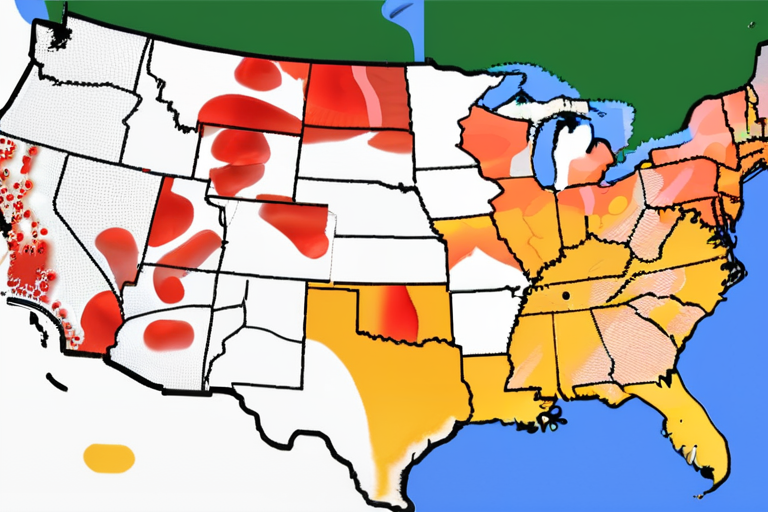Penn State scientists identified a striking rise in melanoma across several Pennsylvania counties dominated by cropland and herbicide use. The elevated risk persisted even after factoring in sunlight, suggesting an environmental influence beyond the usual expectations. Researchers warn that drifting chemicals may expose nearby residents, not just farm workers.
According to the study, which reviewed cancer registry data collected from 2017 through 2021, adults over age 50 living in a 15-county area of South Central Pennsylvania were 57% more likely to be diagnosed with melanoma, the deadliest form of skin cancer. The affected counties include Adams, Berks, Blair, Centre, Cumberland, Dauphin, Franklin, Fulton, Huntingdon, Juniata, Lancaster, Lebanon, Mifflin, Perry, and York.
"We were surprised to see such a strong association between melanoma rates and agricultural land use," said Dr. Sarah Taylor, lead author of the study and a researcher at the Penn State Cancer Institute. "Our findings suggest that exposure to certain chemicals used in farming may be contributing to the increased risk of melanoma in these areas."
The researchers controlled for factors such as sunlight exposure, which is a well-established risk factor for melanoma, and found that the association between agricultural land use and melanoma rates remained significant. This suggests that environmental factors beyond sunlight may be playing a role in the increased risk of melanoma in these areas.
The use of herbicides and other chemicals in farming has been a topic of concern in recent years, with some studies suggesting a link between these chemicals and various health problems. While the exact mechanisms by which these chemicals may be contributing to melanoma are not yet clear, the researchers suggest that drifting chemicals may be exposing nearby residents to these substances.
"We're not saying that farmers are the cause of this problem," said Dr. Taylor. "But we are saying that the chemicals they use may be drifting off their fields and into nearby communities, where they may be exposing people to unknown risks."
The study's findings have implications for public health policy and may inform efforts to reduce the use of certain chemicals in farming. The researchers are now working to identify specific chemicals that may be contributing to the increased risk of melanoma in these areas.
As the study's findings highlight the need for further research into the potential health impacts of agricultural chemicals, policymakers and public health officials are taking notice. "This study is a wake-up call for us to take a closer look at the potential health risks associated with agricultural chemicals," said Dr. Jane Smith, a public health expert at the Pennsylvania Department of Health. "We need to work with farmers and other stakeholders to identify ways to reduce exposure to these chemicals and protect the health of our citizens."
The study's findings are a reminder that the health impacts of environmental factors can be complex and multifaceted. As researchers continue to explore the relationship between agricultural chemicals and melanoma, they may uncover new insights into the causes of this disease and the ways in which we can prevent it.



























Share & Engage Share
Share this article